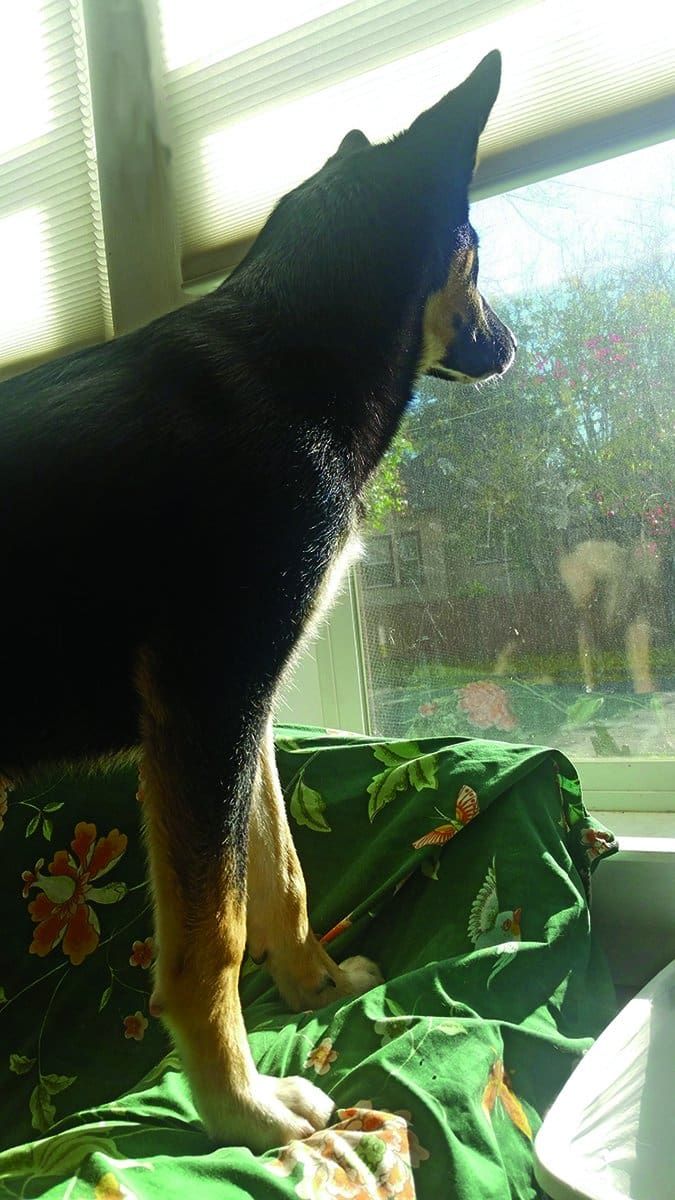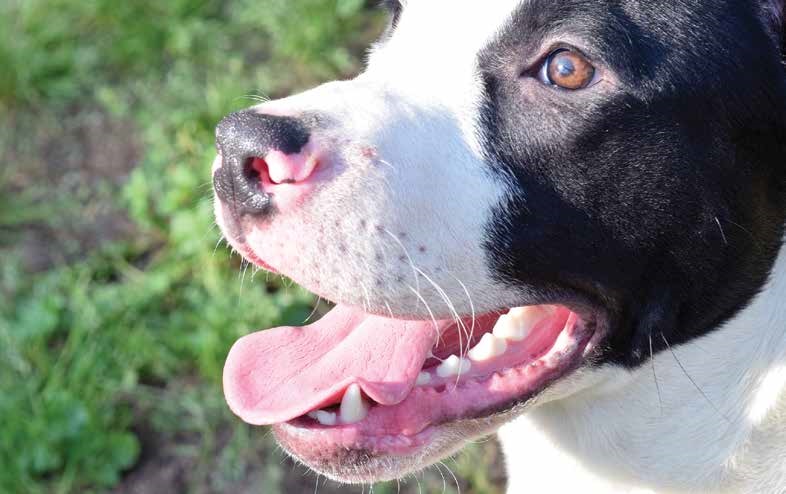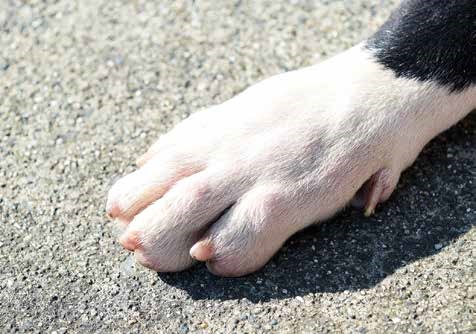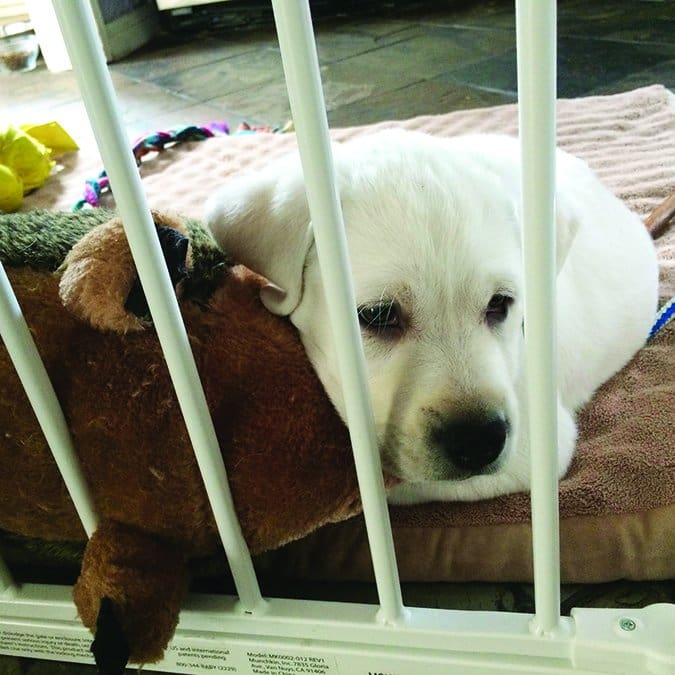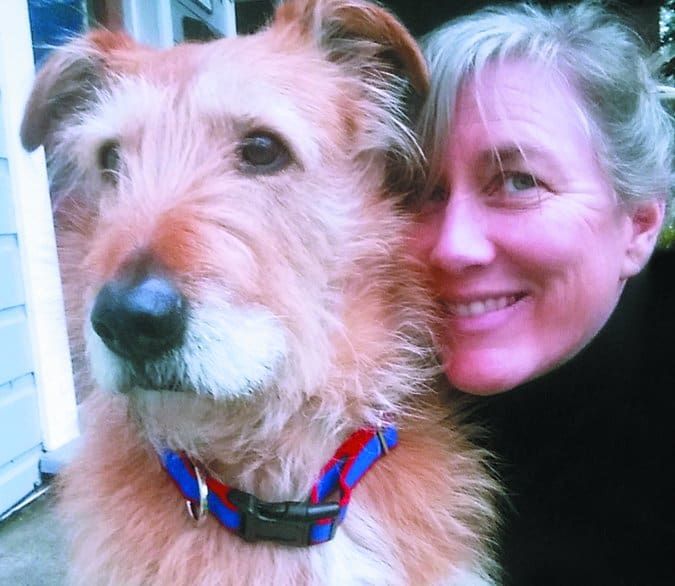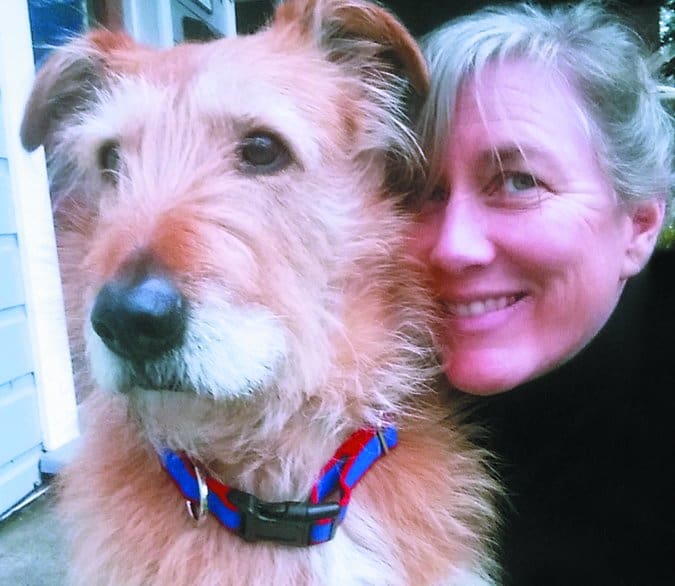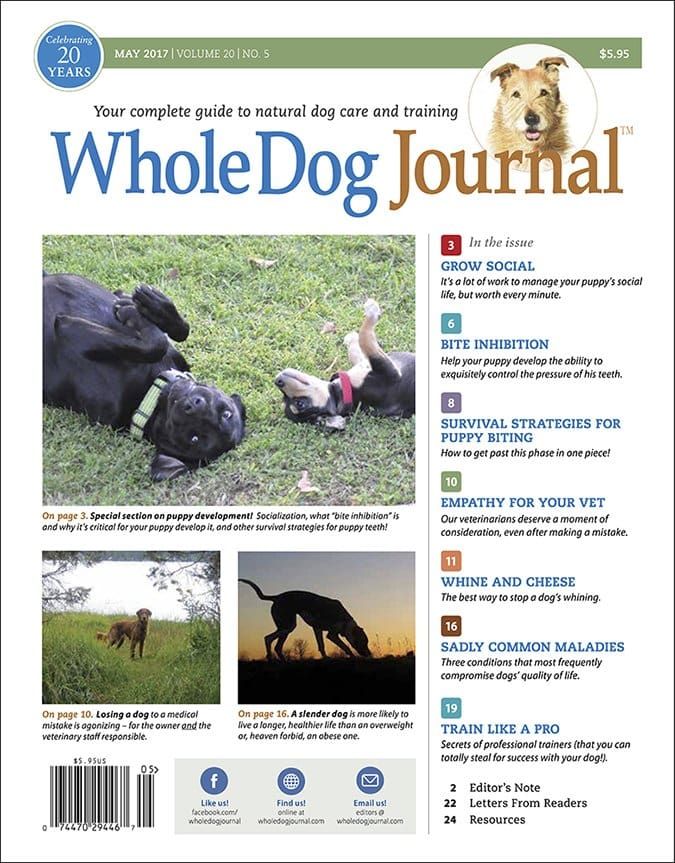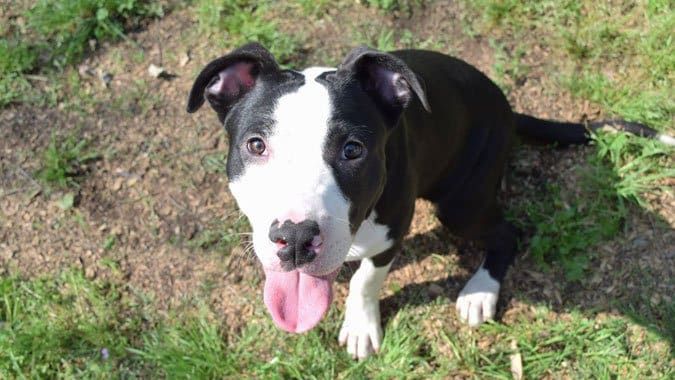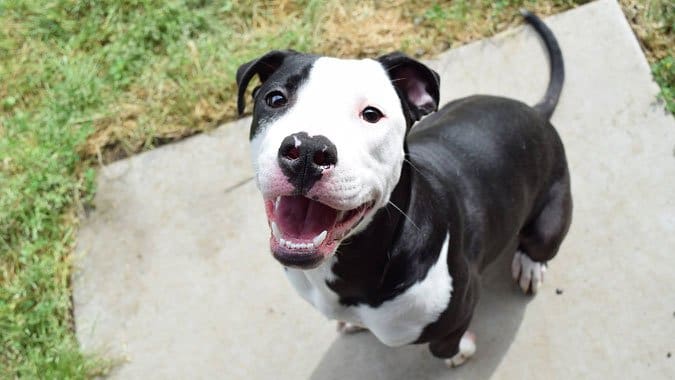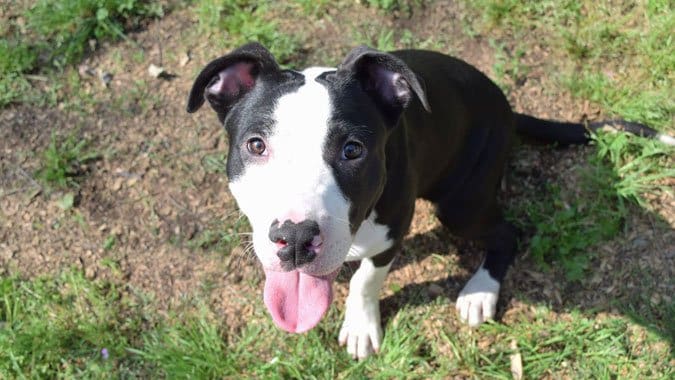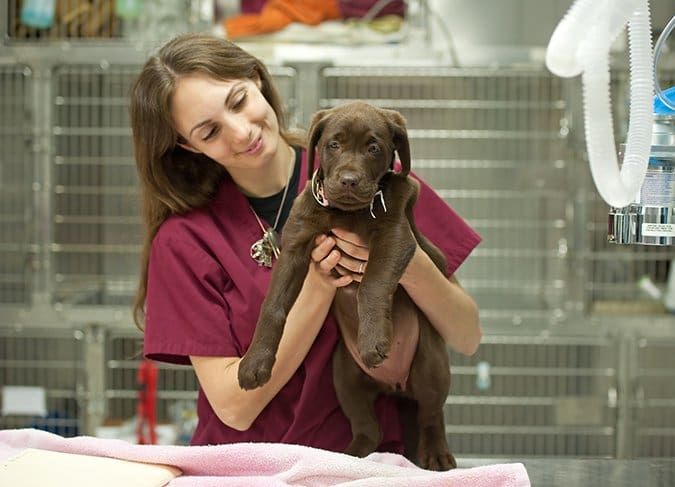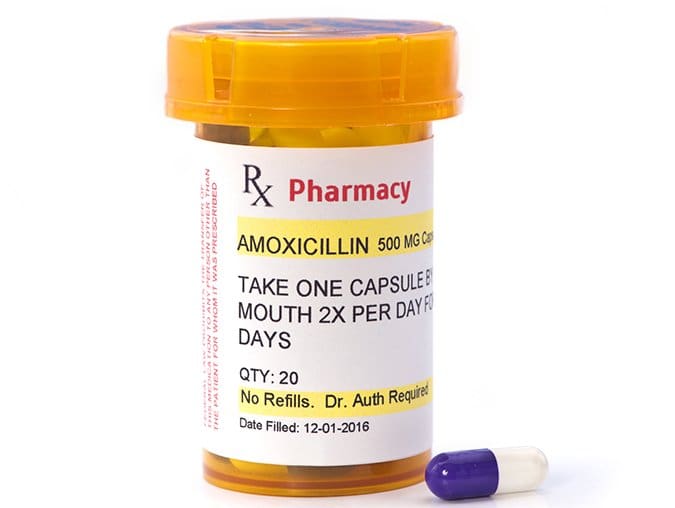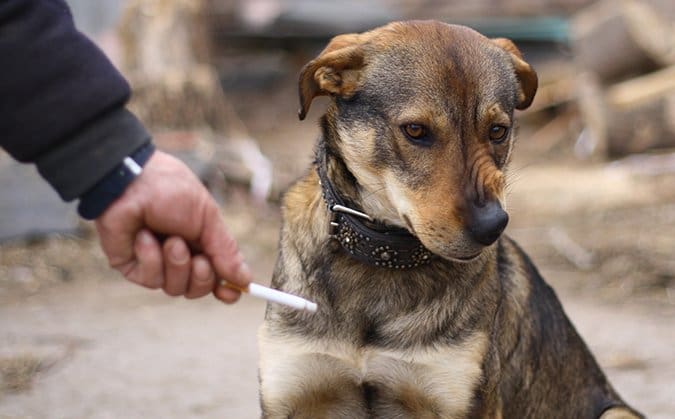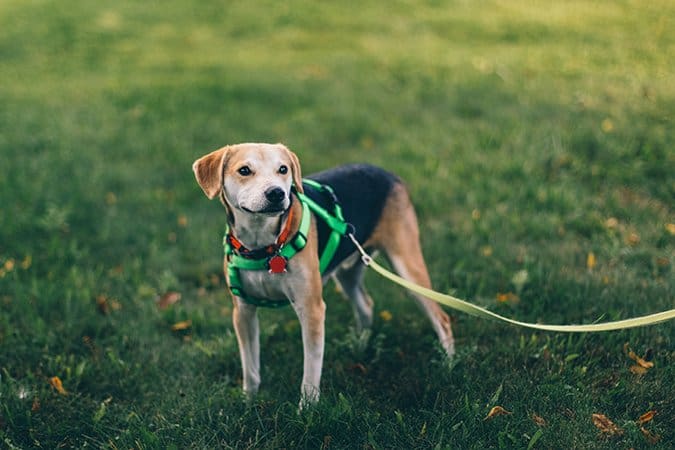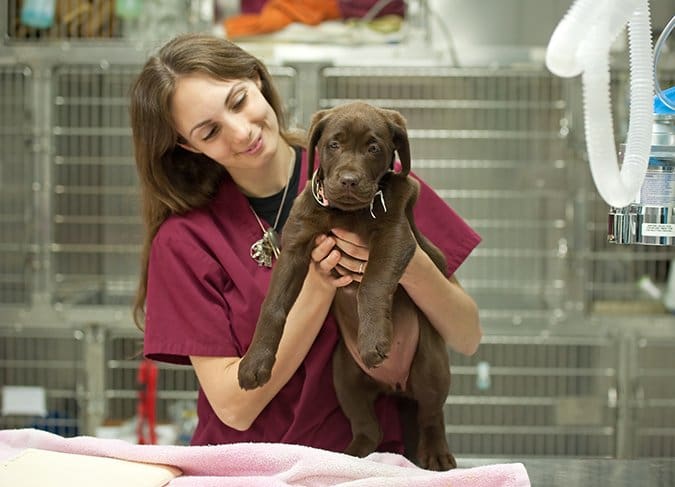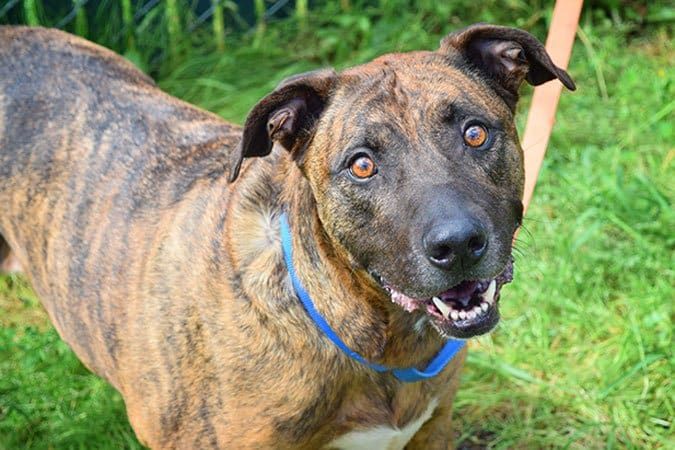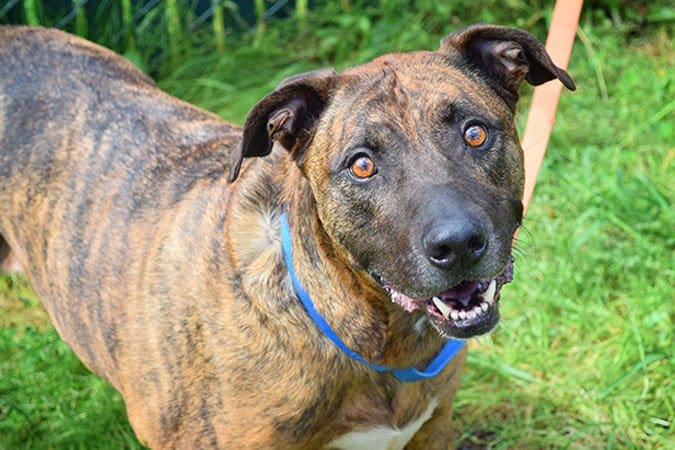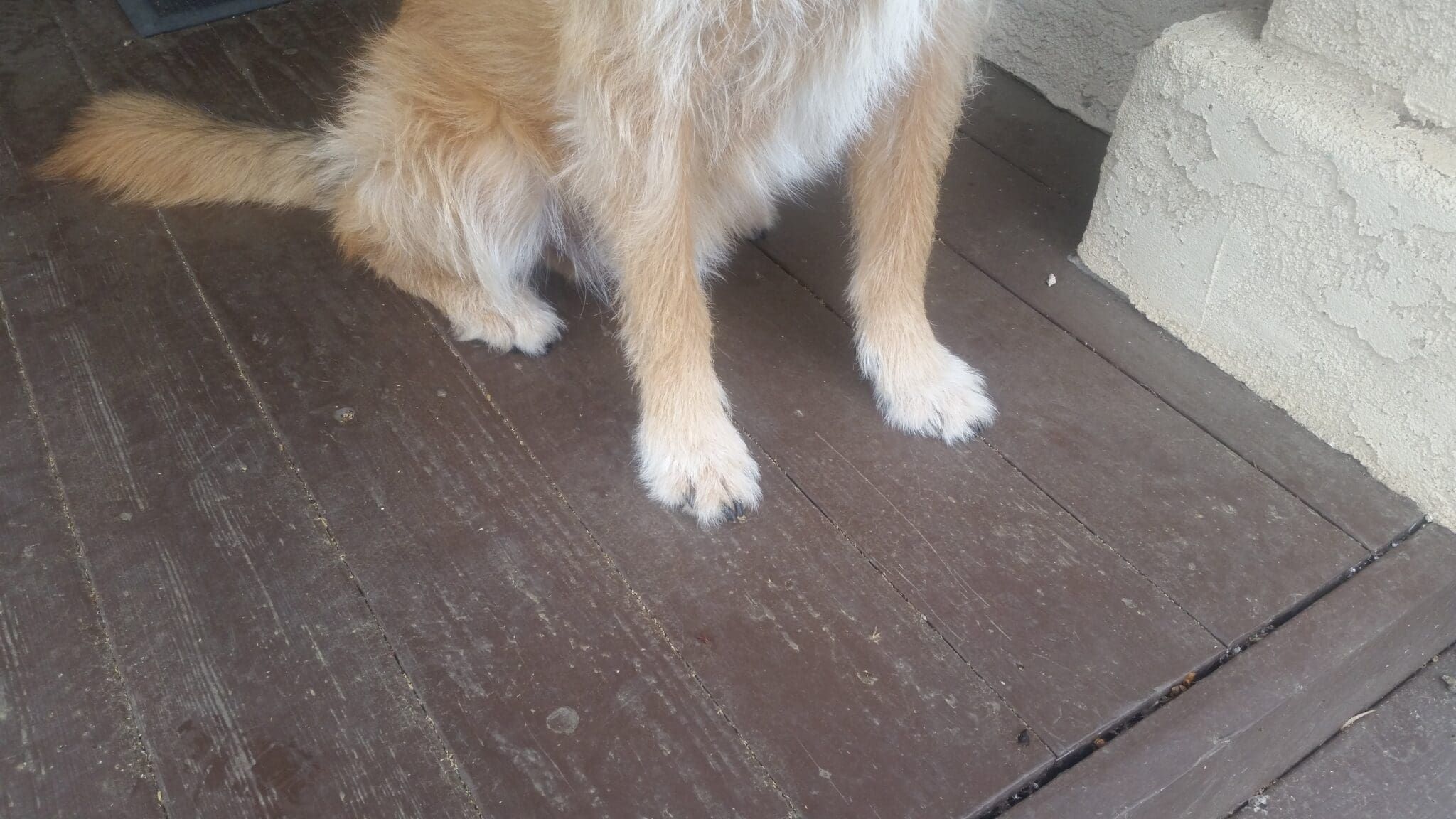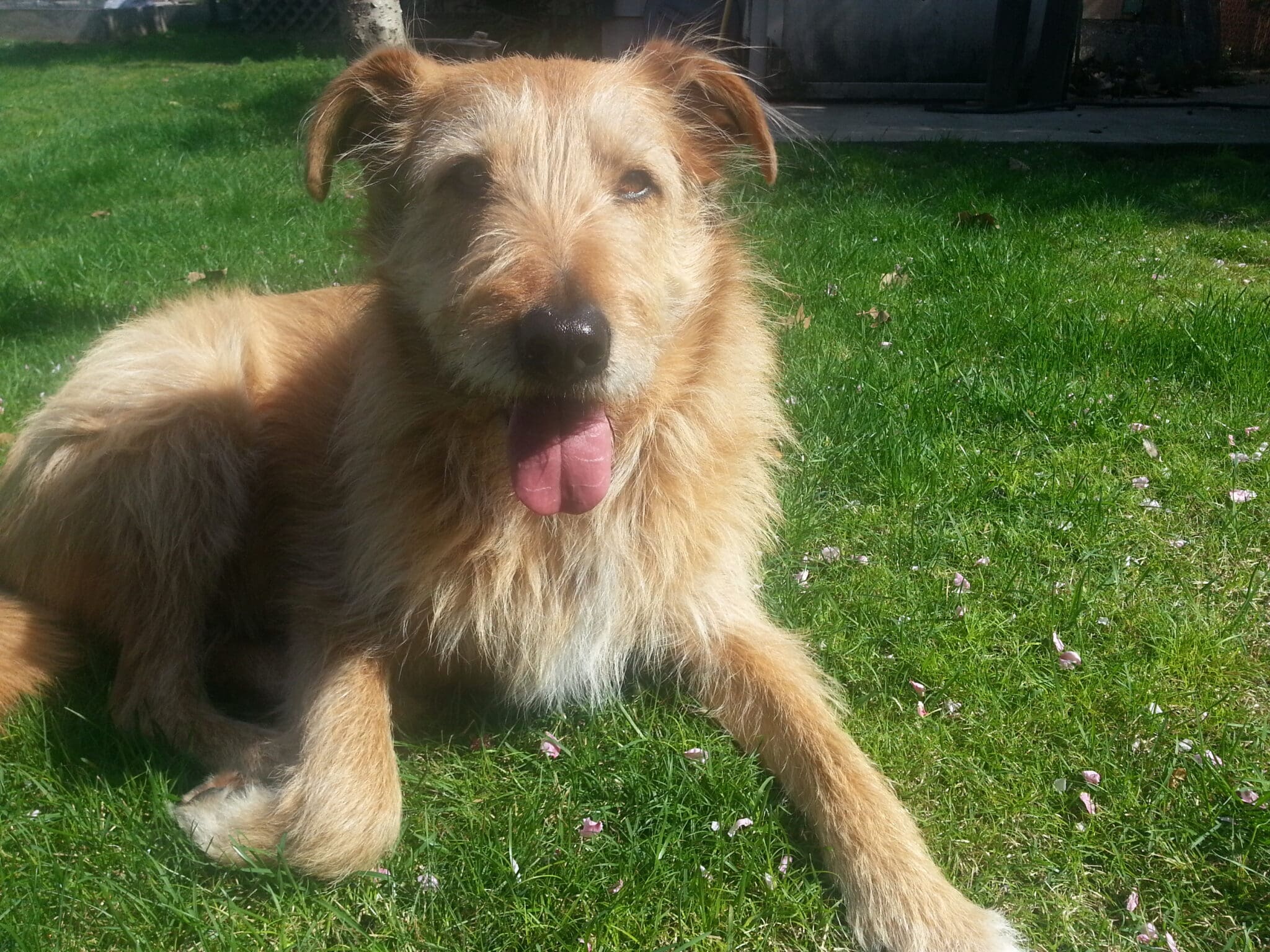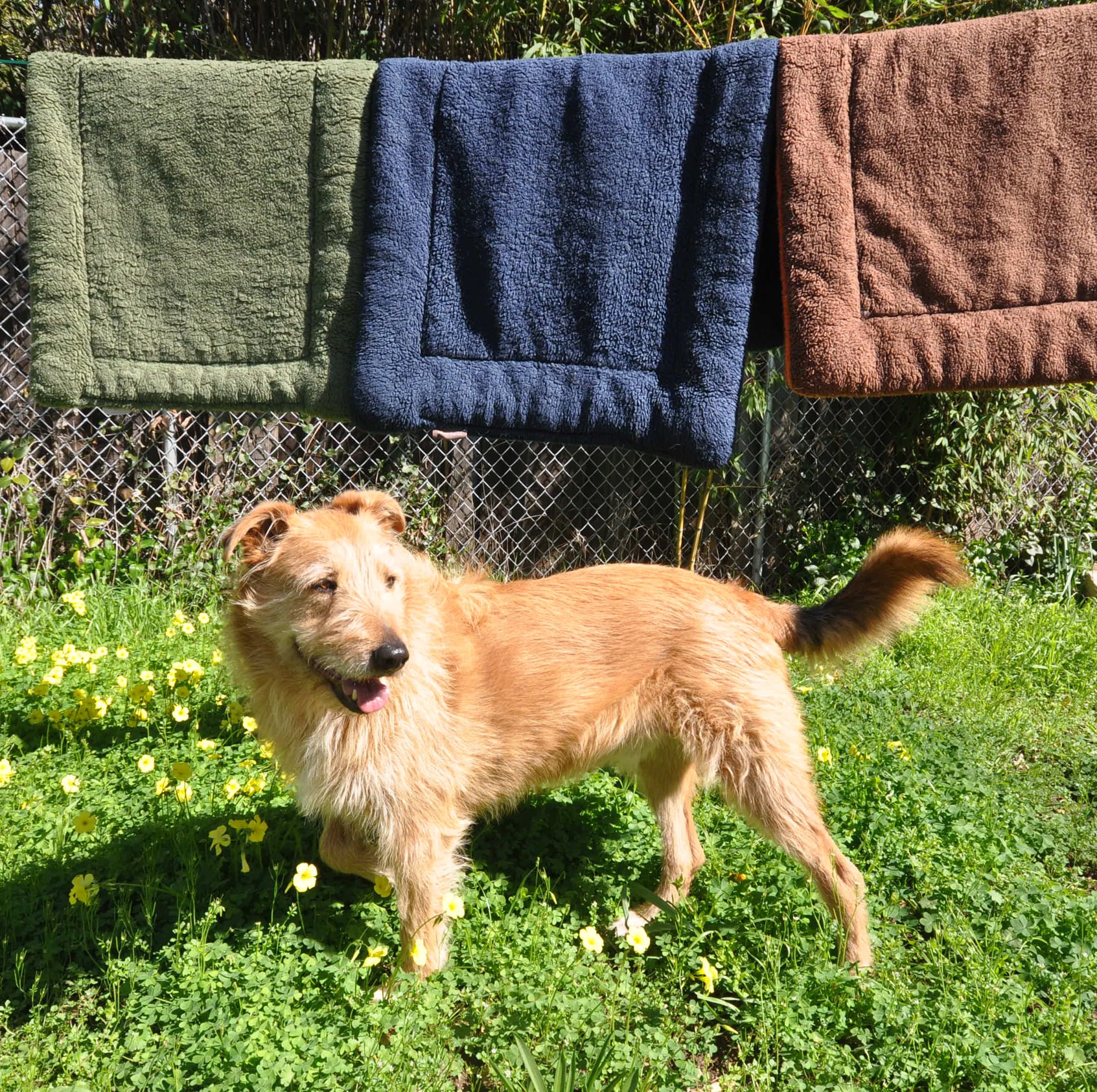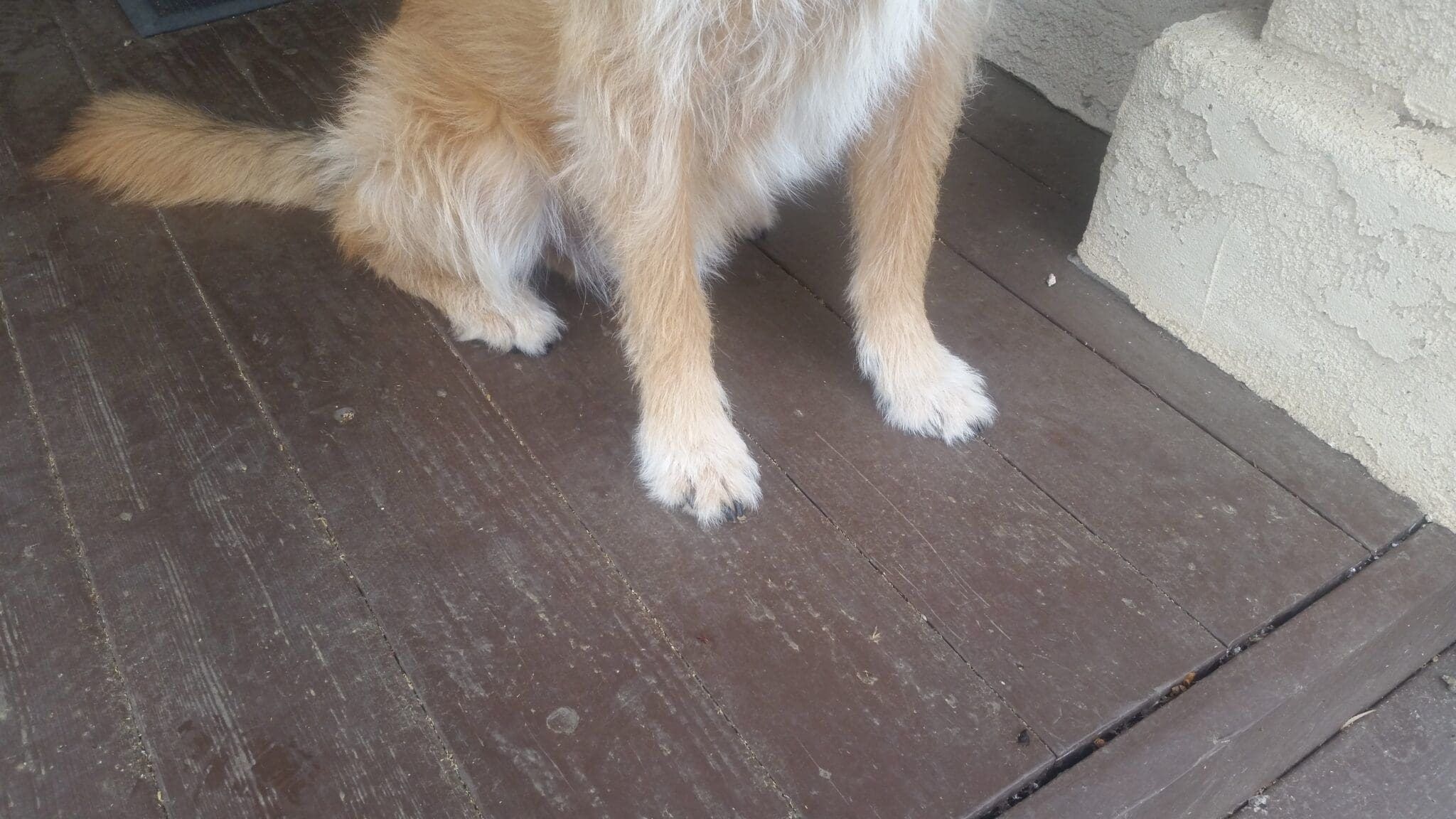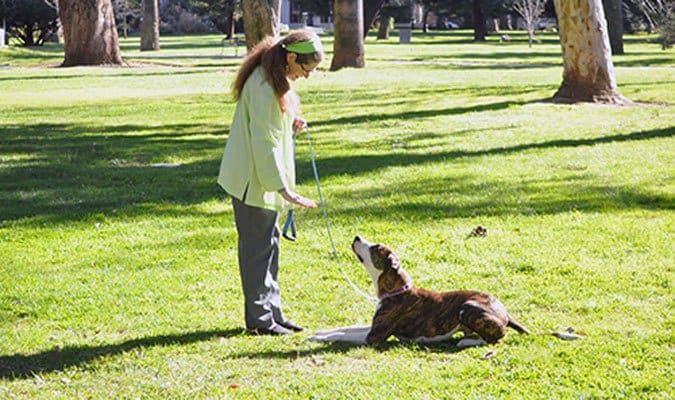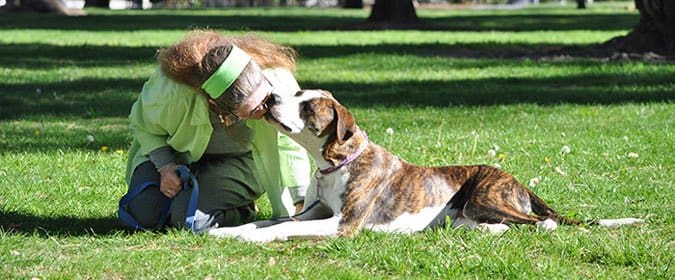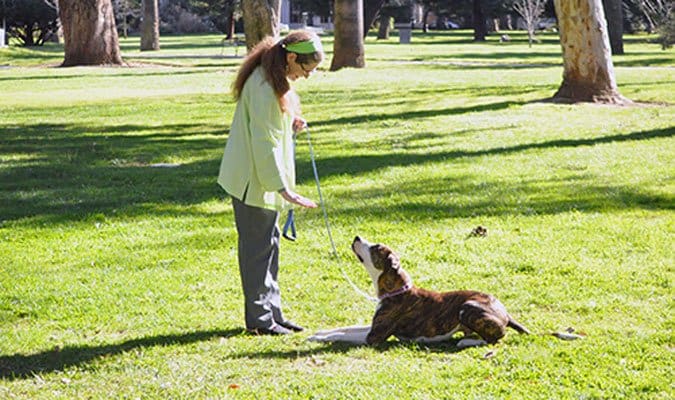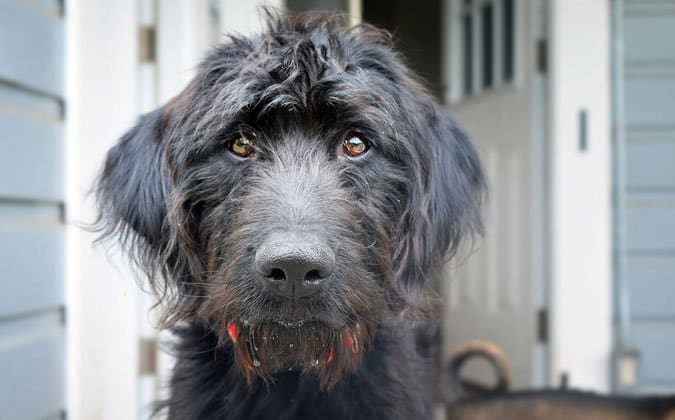DOGS WHINING: OVERVIEW
1. Identify the cause of your dog’s whining so you can determine the appropriate modification response.
2. Implement other procedures and products that can help your dog be more calm.
3. Seek veterinary assistance if your dog’s anxiety is excessive.
I’m pretty tolerant of annoying dog behaviors, and still, I have to admit, whining gets on my nerves. Our beloved Kelpie, Kai, whines. When he does, I have to remind myself that, rather than getting annoyed, I should value my dog’s efforts to communicate, and figure out why the whining is happening. The “why” can be an important first step in modifying many behaviors, especially those that involve vocalization of some sort.
Why Do Dogs Whine?
Dogs whine for a variety of reasons. Understanding your dog’s motivation for whining will lead you to the appropriate modification approach. Misinterpreting the whine, or simply chastising or otherwise punishing your dog for whining, can exacerbate the behavior and even give rise to other more serious behavioral issues. Consider these possible causes:
• Pain or Discomfort. When your dog is whining, the very important first step you should take is to identify and treat – or rule out – pain or discomfort. If your dog hurts, all the modification in the world isn’t going to fix it.
Your dog may be too cold or too hot. Adjust the environment accordingly. Maybe his bedding is soiled. Give him a clean, dry blanket. Perhaps he’s crated and really has to go to the bathroom. (This was explained to me recently by my dog Bonnie, when she was suffering from loose stools and had to go out at 3 a.m. If I had ignored her whining instead of rushing her outside, or worse, reprimanded her for disturbing my sleep, I would have paid a heavy clean-up price for being so unfair to my dog.)
It can be difficult to determine if dogs are in pain. Sure, sometimes they limp, flinch when you touch them, or otherwise make it clear that they hurt, but sometimes they don’t. Dogs can be pretty stoic. Plus, if they have bilateral pain (hurting equally on both sides) there’s no point in limping; it just makes it hurt more on the other side.
If you think your dog may be in pain and your veterinarian can’t find anything, ask about using carprofen or some other nonsteroidal anti-inflammatory drug (NSAID) as a diagnostic tool. If the behavior stops when he is medicated, and returns when the medication stops, it’s a good indication that it’s pain related.
While NSAIDs (such as Rimadyl) can have the potential for gastrointestinal, kidney, and liver side effects, long-term pain results in very poor quality of life. Some studies indicate that as many as 20 percent of dogs over the age of one year may suffer from osteoarthritis. Certainly, many dogs face increasing loss of mobility as they age due to the onset of arthritis. If your dog is whining due to pain, help him be comfortable. (See “Don’t Fear NSAIDs for Your Dog,” below.)
• Stress. Stress is the other major reason that dogs whine. (Pain is a stressor too, so in reality all whining is due to stress, but let’s take a look at the non-pain-related stressors that can cause whining.)
• Anxiety. This is probably one of the most common causes of whining. The answer seems obvious, but I’ll say it anyway: To reduce anxiety-related whining, you need to reduce your dog’s anxiety, whatever the cause.
Distress over separation or isolation (and the anticipation thereof) are two common anxiety-related behaviors, but there are countless other reasons your dog may be anxious. Anything that causes him to be fearful can contribute to this type of whining, and some breeds even seem to have a genetic predisposition to whining.
To help him be less anxious so he will whine less, make a list of things that cause your dog fear or stress, and pick two or three to start counter-conditioning, that is, changing how he feels about those things, so they no longer cause him stress or fear. When you can tick one stressor off your list, pick another to begin working on, until you have addressed enough of them that whining is no longer a problem. Additionally, anxiety-induced and the other types of whining may improve with the application of the ever-growing list of various tools and protocols we have to help our dogs be calm. (More on this below.) Click here for more information about reducing your dog’s anxieties.
• Frustration. This is also one of the more common causes of whining – and it’s the whining that our Kai does. I include “demand whining” under this heading; while some sources list it as a separate category, I consider them the same. A dog who is whining to “demand” something is frustrated that he isn’t getting what he wants – hence, the frustration whine.
The best way to help a frustrated whiner is to take away his frustration, preferably by preempting the behavior. I know that Kai will whine at agility class as he impatiently waits his turn to run. I can preempt his whine by giving him a stuffed Kong or other food-dispensing toy to take his mind off his troubles until it’s our turn. If you do this before the whining starts, you won’t reinforce the unwanted behavior.
• Excitement. Yes, some dogs whine just because they are so happy they can barely contain themselves. It’s not as common as anxiety and frustration whining. Although this is happy whining, there is still some stress involved, though it is eustress (good stress) rather than (bad) stress. Excited whining is often part of a greeting behavior, so I would be less concerned about this compared to the other types of whining that stem from distress.
However, if you do want to reduce your dog’s excitement whining, ask him to engage in another behavior as part of your greeting ritual to shift his brain from excitement mode into thinking mode. One example: Keep a basket of toys outside your house, and as you enter, toss a toy for your dog to retrieve or play with.
• Appeasement. This is another not-so-common presentation of whining, and generally offered in social interactions with other dogs. In this case, it is a healthy communication, and not one you want to interfere with.
Don’t Punish Your Dog for Whining
Some sources recommend punishing a dog’s whine by using a squirt bottle, or worse. Others suggest a more benign form of punishment – removing your attention from the whiner. Generally I am vehemently opposed to the use of positive punishment (dog’s behavior makes a bad thing happen), but when appropriate, I am not opposed to negative punishment (dog’s behavior makes a good thing go away).
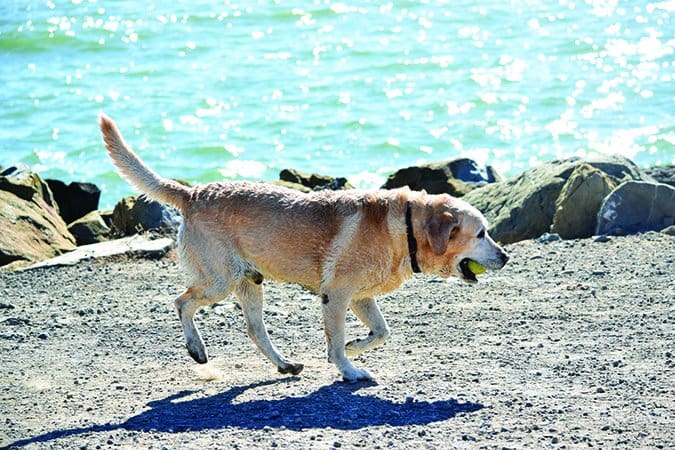
That said, I do not believe it’s appropriate to use even negative punishment with a dog who is stressed; it’s removing your support when he needs you the most!
I know all too well that whining can be annoying, but I feel it’s important to keep foremost in your mind that most whining is a function of stress; while you may suppress the whining with punishment, you add another stressor, which is likely to exacerbate other stress-related behaviors. A better plan is to figure out why your dog is whining, reduce the stressors in his life, and help him change his behavior.
Teaching Calmness to Dogs
Fortunately, as the force-free training movement blessedly continues to gain momentum and we understand there are far better ways than punishment to help our stressed dogs be calm, our access to resources to help us accomplish that goal continues to grow. Here are some of the many options, in addition to counter-conditioning and desensitization, for helping your dog be calm. (Note: Some of these may work on some dogs and not others. Keep trying until you find what works for yours.):
- Exercise. Not only does exercise use up energy your dog might otherwise expend in anxiety-related behaviors, a good round of aerobic exercise causes the release of feel-good endorphins (think “runner’s high”) that actually can help your dog be less anxious.
- Choice. According to Susan G. Friedman, PhD (psychology), “The power to control one’s own outcomes is essential to behavioral health.” Teaching your dog a “choice” cue and looking for opportunities to give him choices in his life can help ease anxieties.
- Positively reinforce for calm. We tend to pay attention to our dogs when they act up, and ignore them when they are calm. Remember to quietly reinforce your dog when he is calm (soft praise, a calmly dropped treat) and you are likely to see more calm behavior.
- Dr. Karen Overall’s Protocol for Relaxation. Dr. Overall is a veterinary behaviorist with an unflinching commitment to force-free training and handling. Her very detailed day-by-day protocol can be used to help your dog relax. It’s laid out as a 15-day protocol, but you can take longer if your dog needs a slower pace, and break the small steps into even smaller ones as necessary to help your dog succeed.
- Karen Overall Protocol for Teaching a Dog to Take a Deep Breath. I know that your dog already knows how to breathe! This exercise, a calming form of biofeedback, teaches him how to cease stress-related panting and breathe through his nose. Think of times that you were stressed and your friends may have reminded you to “Breathe!”
- Massage. Done properly, massage can be as relaxing for your dog as it is for you (assuming your dog does not find touch aversive). If used in conjunction with a scent such as lavender, which has calming properties of its own, you can then use the scent in other venues to help your dog calm himself, due to its association with the calming massage.
- TTouch. Another form of calming touch developed by Linda Tellington-Jones, TTouch uses specific types of touch, movement, wraps, and other equipment to help a dog learn to relax.
- Calming Cap (also known as Thunder Cap). Similar to the hood used to keep a captive falcon calm, the Calming Cap reduces the intensity of visual stimuli to help your dog stay calm. Your dog can see through the Calming Cap, but details are blurred. It can be very useful for dogs who have difficulty staying below threshold. Remember to associate the Calming Cap with treats so your dog learns to love having it put on.
- Thunder Shirt. This product (or other snug-fitting dog-shirt) functions on the same principle as swaddling an infant. Studies show that infants who are swaddled cry less, and the extrapolation is that dogs can also be comforted by the feeling of being held; the Thunder Shirt seems to work for many dogs.
- Adaptil. Previously known as Comfort Zone, Dog Appeasing Pheromone, and DAP), this is a synthetic substance that is meant to mimic the natural pheromones that are emitted by a mother dog nursing her puppies. The biological effect of the natural pheromone helps calm the puppies; this product purports to do the same for adult dogs. It is available in a spray, plug-in, and collar. While some professionals report good results with the product, others feel strongly that it is snake oil. We put it in the “can’t hurt, might help” category.
- Through a Dog’s Ear. This is music, specifically selected for its potential to calm dogs. The Through a Dog’s Ear music selections are sold as CDs, or in a marvelous, small (21/2 by 3 inches), portable unit called the iCalmDog that has amazing sound quality. It’s very calming for humans; if I play it in my office while I’m working I’ll fall asleep at my desk! Play this music when things are calm in your home to help your dog relax and so he forms a very good association with it, and then you can also use it during counter-conditioning practice to give him the same calm association that he had when it was playing at home.
- Nutraceuticals.These products, isolated or purified from foods, are generally sold in medicinal forms not usually associated with food. A nutraceutical is demonstrated to have a physiological benefit or provide protection against chronic disease. Two that are FDA-approved for use in dogs are Anxitane (L-theanine) and Zylkene (casein). If they interest you, discuss them with your veterinarian to be sure she is comfortable with their use for your dog. If so, you can get them through your vet or online. I have had success with over the counter L-theanine. I buy the capsules, so I can open them and sprinkle the contents on my dog’s food. If you get the chewable tablets, be sure you do not get any that contain xylitol, which is deadly toxic to dogs.
Medication for Dogs with Anxiety
In addition to all the things mentioned above, there are a variety of psychotropic drugs that can help ease your dog’s stress and anxiety. I tend to recommend the medication route to clients when their dogs have a level of anxiety that is clearly destructive to the quality of life for canine and/or human. These must be obtained from a veterinarian, and here’s the rub: Most veterinary schools do not require vet students to take classes in behavior, and most veterinarians aren’t very well-informed about behavior modification drugs. Well-meaning as they are, they can easily prescribe the wrong medication – sometimes even (unintentionally) recommending a medication that makes behavior worse instead of better.
As a non-veterinarian, it’s not appropriate (or legal) for me to suggest specific medications to clients. The good news is that many veterinary behaviorists offer free phone consultations to other vets who want information regarding appropriate medication selection and dosage for their clients’ animal companions. Even if your veterinarian charges you something for her time to do the research, it shouldn’t be cost prohibitive, and the consult will be well worth the cost.
Your vet can find contact information for veterinary behaviorists on the website for the American College for Veterinary Behaviorists.
Don’t Fear NSAIDs for Your Dog: There Are Worse Fates!
When Rimadyl (carprofen) first came into general usage in the early 1990s, there were alarming reports of dogs who suffered from liver and kidney damage after being given the drug, including some fatalities. However, two-plus decades later, reports indicate that the actual incidence of negative side effects is exceedingly low (.02 percent) and that most (70 percent) of those affected are geriatric dogs. Initially, veterinarians advised regular blood tests for dogs on Rimadyl as long as the dog was taking the drug. At least one recent study suggests that dogs who are going to have a bad reaction to the drug will have it early, and ongoing regular blood tests may not be necessary.
My first Kelpie suffered from severe arthritis in the mid 1990s at the age of 12, after a decade-plus of energetic activity. I was very close to euthanizing her to relieve her pain. When my veterinarian, Dr. Diana Phillips, suggested Rimadyl, I balked.
“I’ve heard some pretty bad things about Rimadyl,” I said.
Dr. Phillips responded bluntly, “You’re thinking about killing your dog tomorrow … how bad can the Rimadyl be?”
Oh. Duh.
Rimadyl bought me two more years of quality life with my beloved Keli, she suffered no ill-effects from the drug, and Dr. Phillips’ words have stayed with me. I often share this story with clients who are reluctant to consider pain relief for their dogs who are hurting. A simple pain relief medication just may make your dog look (and, of course, more importantly) feel so much better that you may forget he’s got anything wrong with him at all.
Author Pat Miller, CBCC-KA, CPDT-KA, is WDJ’s Training Editor. She and her husband Paul live in Fairplay, Maryland, site of her Peaceable Paws training center. Miller is also the author of many books on positive training. Her newest is Beware of the Dog: Positive Solutions for Aggressive Behavior in Dogs.


